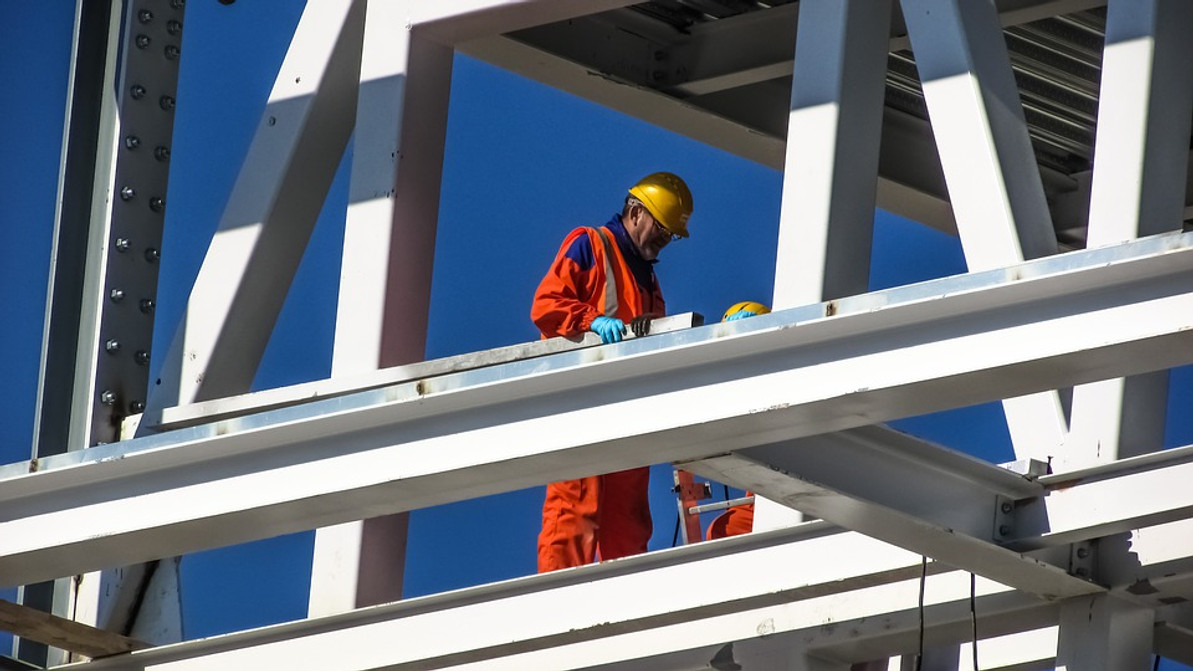The Dos and Don'ts of Construction Safety

Construction workers have higher rates of injuries than workers in most other industries. According to the Bureau of Labor Statistics (BLS), more than 150,000 construction workers are injured each year in the United States. Whether it's commercial or residential construction, this job doesn't come without risks -- and unfortunately, there's no way to completely avoid the risk of injury. Employers, however, can provide workers with a safe working environment to lower their risk of injury by doing the following.
Use Caution When Climbing Ladders
When using a ladder, construction workers should be cautious to avoid accidentally falling and injuring themselves. Even a relatively short fall from just 5 feet is more than enough to cause serious injury. This is why the Occupational Safety and Health Administration (OSHA) recommends maintaining three points of contact at all times when climbing up or down a ladder.
Inspect Weight Ratings for Scaffolding
Countless construction companies use scaffolding so that workers can reach roofs and other elevated surfaces. While there's nothing wrong with scaffolding, workers should inspect its weight rating before using it. All systems used to raise or support a human worker should have a weight rating. This rating reflects the maximum amount of weight that it can safely support. To reduce the risk of collapse, construction workers should avoid exceeding the scaffolding weight rating.
Use a Buddy System When Working in Heat
Many occupational health experts recommend construction workers use a buddy system when working outdoors in the summer. Basically, this means that two workers observe each other for signs of heat illness, such as fatigue, slurred speech and nausea. The hot summer sun can quickly cause heat illness in construction workers. Using the buddy system, however, allows construction crews to create a safer environment while mitigating the risk of heat illness in the process.
Maintain Tools and Equipment
It's important that construction workers maintain all their tools and equipment. From handheld power tools to fork lifts and heavy lifting machines, construction workers should inspect and maintain all their tools and equipment. A broken or mafunctioning tool leaves the worker susceptible to injury.
Wear PPE
Finally, wearing personal protective equipment (PPE) will naturally lower the risk of injury in the construction industry. After all, the fundamental purpose of PPE is to protect the wearer from bodily harm. Under federal law, employers are responsible for purchasing and providing workers with the necessary PPE.
Recent Posts
-
Fire Safety in the Workplace: What You Need to Know
What steps are you taking to prevent fires in your workplace? According to the U.S. Occupational Saf …Aug 23rd 2023 -
Is It Safe to Go Jogging With a Cold Infection?
If you're suffering from a cold infection, you might be wondering whether it's safe to go jogging. T …Aug 22nd 2023 -
5 Safety Tips to Follow When Using a Powder-Actuated Tool
Powder-actuated tools are commonly used to join materials to steel and concrete. Also known as Hilti …Aug 20th 2023




